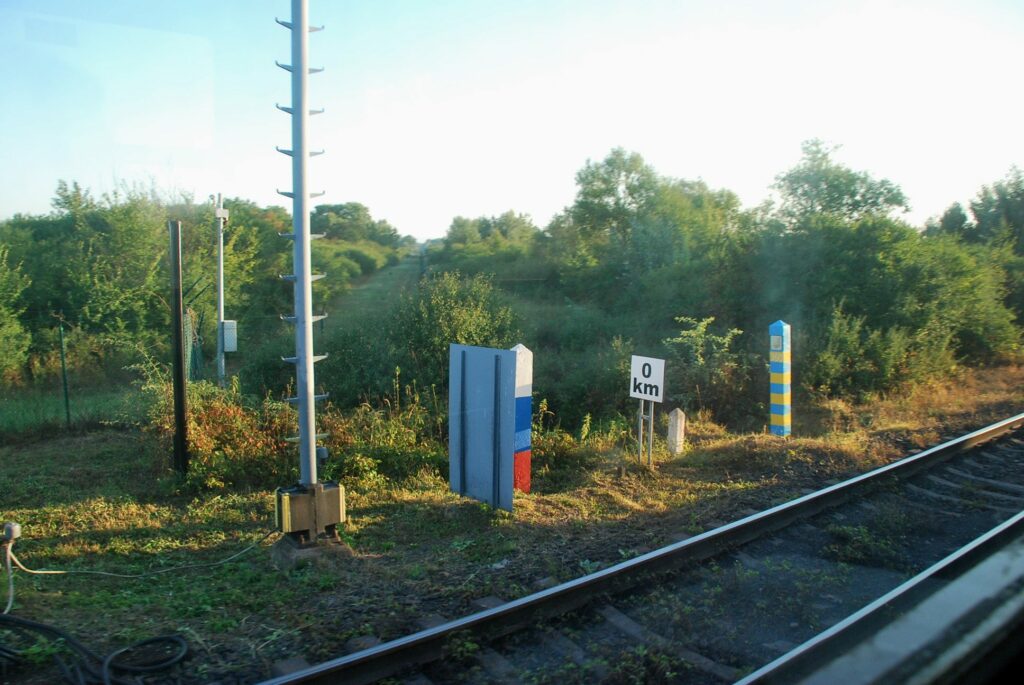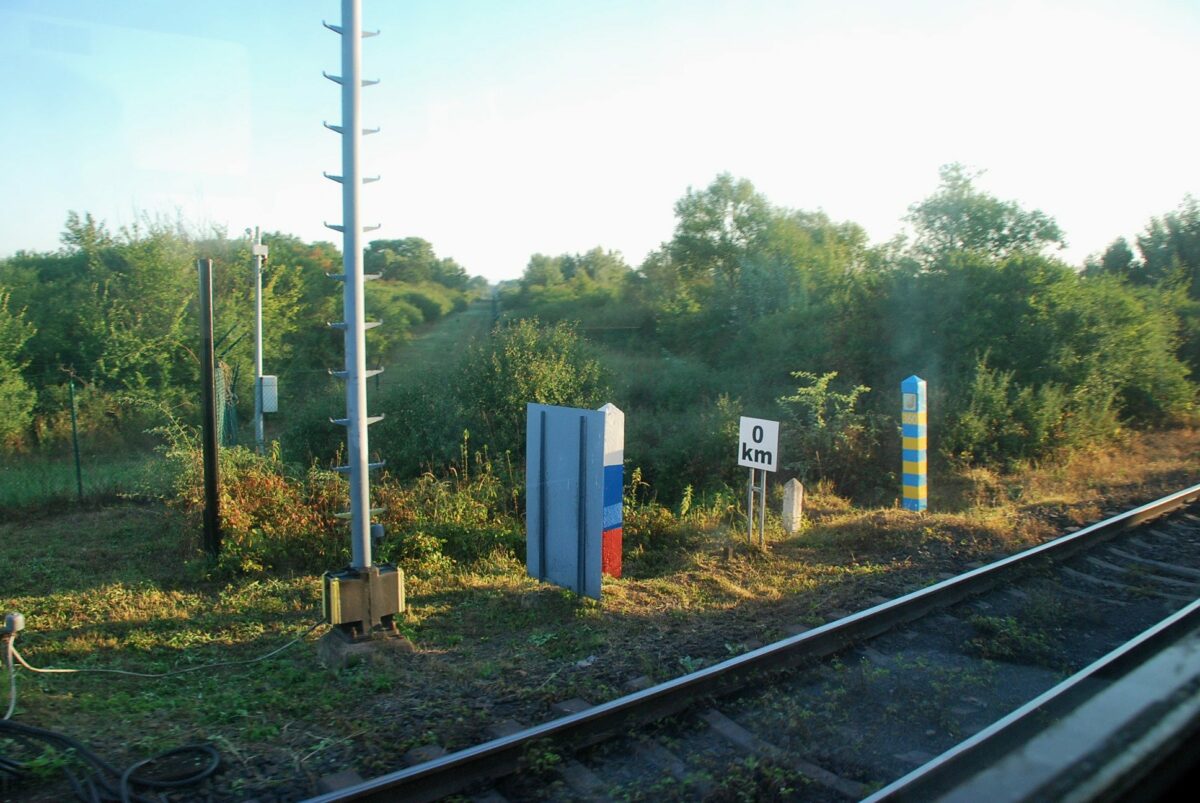
Within the first two months of the Russian invasion of Ukraine, more than 5 million people have fled Ukraine. This has created an unprecedented situation in the countries neighboring Ukraine. Over 350,000 people have entered Slovakia since the war started, and while some of them continue their journey towards the western countries, a majority is staying for the time being. People from across the country are donating food, medicine, clothes, or money. They are offering their spare rooms and apartments to Ukrainian refugees for free. Companies and institutes are opening up job positions specifically crafted for Ukrainians of all qualifications, and the national railways and many bus companies offer free travel to Ukrainian citizens. But most importantly, these acts of solidarity do not exist outside or in opposition to the state. On the contrary, the state itself is providing a significant amount of emergency infrastructure, accommodation, healthcare, and the minister of finance made promises to financially support the people who host Ukrainian refugees. This marks a radical departure from the state’s role in the previous “migration crises” when the state distanced itself from humanitarian assistance.
However, two months after opening the border to refugees from Ukraine, there is already an identifiable pattern of racially and ethnically based exclusion at the border and in the humanitarian infrastructure. Numerous cases of third country nationals, especially of non-white complexion, were denied entry or an equivalent level of humanitarian assistance both within Ukraine as well as upon entering the Slovak territory. There are reports of Nigerians who were denied entry to Slovakia, or students from non-European countries routinely facing difficulties leaving Ukraine due to not having the required visa. In addition, members of various far-right groups were seen harassing people of color at the border and are routinely posting racially derogatory messages on social media about the situation at the border. Many of these instances are recorded and reported on twitter through the initiative #AfricansInUkraine.
This differential treatment is further highlighted by the activation of the 2001/55/EC directive by the EU Justice and Home Council in order to establish a mechanism for streamlined granting of temporary protection to fleeing Ukrainians. The mechanism excludes many third-country nationals residing in Ukraine from accessing this protection. While individual member states are at liberty to include those groups in their own protection mechanisms, the EU-wide directive does not grant the same levels of protection to large sections of the non-Ukrainian nationals fleeing the warzone.
Similarly, Ukrainian citizens of Roma ethnicity have been experiencing systemic discrimination at the border and beyond as well. Romea, for example, reports on numerous examples of Roma refugees being denied the same level of humanitarian assistance and were openly racially attacked in public spaces. In Slovakia, there are numerous testimonies of Ukrainian Roma being openly neglected at the border while “white” Ukrainians are offered accommodation, food, and transport. In a TV report, a Slovak Roma pastor from a parish near the Ukrainian border describes the situation as racially discriminatory and laments the comparative lack of “enthusiasm” when it comes to helping Roma refugees. This racialized dimension of solidarity have been brought up by Roma NGOs and the government commissioner for Roma minorities have since deployed a permanent team to the border in order to “monitor and prevent discriminatory practices and tendencies.” While this state intervention might have improved the segregation at the border, instances of discrimination towards Ukrainians of Roma ethnicity within the country and in the region are still regularly reported.
The long-term context of the Slovak anti-migration politics
The approach of Slovakia, however, must be seen in the larger context of the country’s anti-immigrant stance. While the unprecedented, and for many, unexpected demonstration of solidarity with the war refugees from Ukraine deserves to be applauded, it would be immature to draw conclusions about a radical shift in the country’s anti-migration stance. The pattern of racial and ethnic discrimination and hierarchization of solidarity and humanitarian assistance unfortunately mirrors the regional (and EU-wide) migration politics. The question here is twofold: how long will this wave of unchecked solidarity last and what will it mean for the future Slovak immigration politics. While it is impossible to answer the first question without relying on a large degree of speculation, one can attempt to analyze the meaning of the current situation within the large context of the country’s anti-immigration stance. Prior to the Russian invasion of Ukraine in February 2022, Slovakia was not a particularly desirable destination for asylum seekers. This was due to the combination of relatively unattractive economic prospects for potential immigrants, the notorious prevalence of racism and xenophobia in all aspects of the country’s governance as well as everyday life (epitomized by the structural oppression of the Roma minority which is not far from a racial apartheid), extremely conservative anti-immigration stance espoused by all the major political parties as well as an outdated, overbeauracritized, and slow asylum granting procedure.
As a result of this, from the establishment of the Slovak Republic in 1993 until 2021, only 59,695 people requested asylum in the country. In the same period only 903 asylums were granted and 459 of these were issued before 2003. In the last two decades, only 5–30 people were given asylum each year in Slovakia. The only notable exception to this low number is the year 2016 when a group of 149 Iraqis was accepted in the country as a part of the EU relocation mechanism. Importantly however, the accepted Iraqi families were all handpicked by the Slovak authorities and only Assyrian Christians who passed a strict screening process were accepted; in line with the fierce anti-Muslim rhetoric of the then “social-democratic” government of the prime minister Robert Fico and his party SMER (Direction).
Beyond the disheartening asylum data lie at least two decades of structural anti-immigration politics that permeates all sides of the political spectrum. As in the other three countries of the Visegrád Group, Slovakia has upheld a radical stance towards acceptance of refugees and asylum seekers throughout the last couple of years. There has been little to no meaningful political challenge to such anti-immigration stance. The political debate on the issues of immigration and accepting asylum seekers in Slovakia oscillates between openly racist and xenophobic rhetoric of the far-right and the more “moderate” opposition to migration based on “rational socio-economic argumentation” espoused by most parliamentary parties.
On the far-right end are almost-fascist parties such as the LSNS (Popular Party – Our Slovakia) and Republika (Republic, a dissenting outgrowth of LSNS) who oppose any immigration and regularly call for “White Slovakia” and “fight against Islam.” The leader of the movement Republika, Milan Mazurek is infamously known for throwing cobblestones at a Muslim woman with children in Bratislava while shouting Islamophobic slurs. A former MP, he lost his mandate after being found guilty for spreading anti-Roma racial hatred in a radio interview. The combined support for the two fascist parties oscillates around 10%.
Not far from such openly racist and Islamophobic stance is the former PM Fico and his Smer-SD party. Fico, who was the prime minister during what has been termed the “migrant crisis” of 2015–2016 vehemently opposed the EU-wide refugee redistribution mechanism (the so-called “quota”) and teamed up with the Hungarian PM Orbán in challenging the scheme through the European Court of Justice. During that period, Fico made numerous statements about the cultural incompatibility of Muslims with Slovaks (ignoring the numerous well integrated community of Balkan Muslims living in Slovakia) and openly stated that “Islam has no place in Slovakia.” He admitted that his anti-immigration stance is not due to economic limitation (in fact, Slovakia is facing a long-term unskilled labor shortage) but due to incoming migrants “changing the face of the country.” In the following years, Fico’s anti-immigration rhetoric hardened, and SMER-SD’s political position became more conservative and proto-fascist.
The current government, elected in 2020 on the premise of ending the twelve years of Fico’s corrupt rule, continues, without any meaningful change, the strict politics of anti-immigration. None of the four governing center-right parties had in their electoral program an intention to liberalize the restrictive immigration system, nor did any party propose any legislature that would help immigrants, refugees, and asylum seekers in Slovakia. In fact, leaders of the two government parties Richard Sulik of SaS (centre-right libertarian Freedom and Solidarity) and the oligarch Boris Kollar of Sme Rodina (right-wing populist “We are Family”) were among the most vocal critics of the EU’s acceptance of Syrian refugees. Sulik, who emigrated to West Germany as a child with his parents, argued in a talk show on the German TV ARD in 2016 that the limit for accepted refugees should be zero and even went as far as condoning and justifying the use of tear gas, shooting, and other violent methods in keeping people from entering the EU territory.
These are just some of the more infamous examples of the radical anti-immigration stance of most Slovak political parties. The list is far from exhaustive, and it is safe to conclude that conservative, exclusionary politics is not limited to the nominal “right-wing” but is at the core of political discourse across the whole ideological spectrum. A small deviation from this otherwise conservative discourse is the position of president Zuzana Čaputová. Čaputová, who ran for office with the support of the non-parliamentary party Progresivne Slovensko (Progressive Slovakia), represents a new wave of liberal politics in the country which embraces a number of socially progressive stances ranging from support of the LGBT community to a more humane asylum structures. The position of the president is, however, largely ceremonial and while the shift in political discourse brought about by the Čaputová’s election in 2019 is welcome, it does not, in itself, represent any tenable political change with regards to immigration and asylum politics.
Does this pose an opening for a meaningful change in anti-immigration politics?
The solidarity and mobilization of humanitarian infrastructure in Slovakia seen in the immediate aftermath of the Russian invasion of Ukraine is remarkable. It demonstrated that the country not only has the resources and capabilities to launch a large-scale humanitarian operation, but that there is a significant degree of political will and enthusiasm in the society to support and participate in such efforts. However, it also highlighted the limits of this openness and assistance. As many have pointed out since the beginning of the crisis, there is a strong ethno-racial element to the current wave of solidarity which is to a large degree built on a perceived ethnic, cultural, racial, or linguistic proximity with Ukraine. This sentiment has been confirmed by the repeated off-handed remarks in the media about the civilized (European) nature of Ukraine in comparison to other countries that experienced war in this century.
Recognition of the discriminatory treatment of non-white refugees does not diminish the suffering of the Ukrainian people under the Russian invasion or the need of the Ukrainian refugees for international humanitarian assistance and protection. It does, however, open up a series of uncomfortable questions about the nature of EU’s immigration politics in general, and its eastern states in particular. Is the current solidarity with Ukrainian refugees only a momentary derailment from the extremely conservative anti-immigration stance of the eastern EU states? Or does it have a transformative potential, and can it lead to a more open governance of immigration? And can it force the governments of these countries to rethink their highly racist and outdated asylum granting structures? Or will the current moment remain an exception to the otherwise exclusionary anti-immigration politics?
To understand the urgency of these questions, one only needs to look back a few months to October 2021, when Lukashenko ferried mostly Middle Eastern refugees to the Belarusian-Polish border. The EU and Polish response then was radically different from what we are witnessing now and instead of opening the borders and accepting the asylum seekers, Polish authorities have erected an impromptu fence, stationed military at its border, and the Warsaw-based Frontex was deployed to facilitate the forced return of people who managed to enter into Poland. In a long-term view of the eastern EU border, it is heightened militarization and exclusion that is the norm, with the kind of openness we are witnessing with regard to the Ukrainians being the exception. What, then, is to be done in a country like Slovakia where there is little hope that things will change through the state and how to politically link the unprecedented solidarity with Ukrainian refugees to the larger struggle for a more just and inclusive border regime in Europe?
The immediate task is to combat the racial profiling and discrimination at the border and to fight against the identity-based differentiation during the processing of refugees from Ukraine. This means ensuring that third country nationals, especially people of color, and Roma Ukrainians are offered the same level of protection and assistance as white Ukrainians. The long-term strategy must build on the acknowledgement that the current situation exposes a lot of hypocrisy and racial/ethnic/religious exclusions at the core of Slovakia’s (and EU’s) immigration politics. Seeing the possible scope of solidarity and openness, the daunting task ahead is to struggle for universalization of such openness and expansion of exclusionary solidarity to anyone who needs or wishes to move to Europe. In the absence of any political party with progressive immigration stance, there is little reason to believe that the current situation will prompt the state to reassess its current immigration/asylum policy. Therefore, in a country like Slovakia, with little hope for a change from above, it must be the task of the movements and organizations working on the ground to begin the conversation around the issues of migration and asylum while engaging in the everyday struggle.
Unfortunately, the divisiveness of solidarity and the exclusionary fault lines run so deeply in Slovak society, it is hard to imagine the possibility of a radical turnaround of the country’s conservative anti-immigration stance. The more likely scenario is that once the situation in Ukraine settles and the number of Ukrainians fleeing the war diminishes, the state will once again return to its old ways. These disheartening prospects are linked to the growing popularity of radical far-right and nationalist-populist movements and perhaps hint at the practical non-existence of any meaningful left-oriented political movement able to galvanize the prevailing sentiments into a progressive societal vision.

Jakub Crcha has an MA degree in Sociology and Social Anthropology from CEU. Currently based between Berlin and Bratislava, he mainly researches Frontex and the violence at the EU external border.

